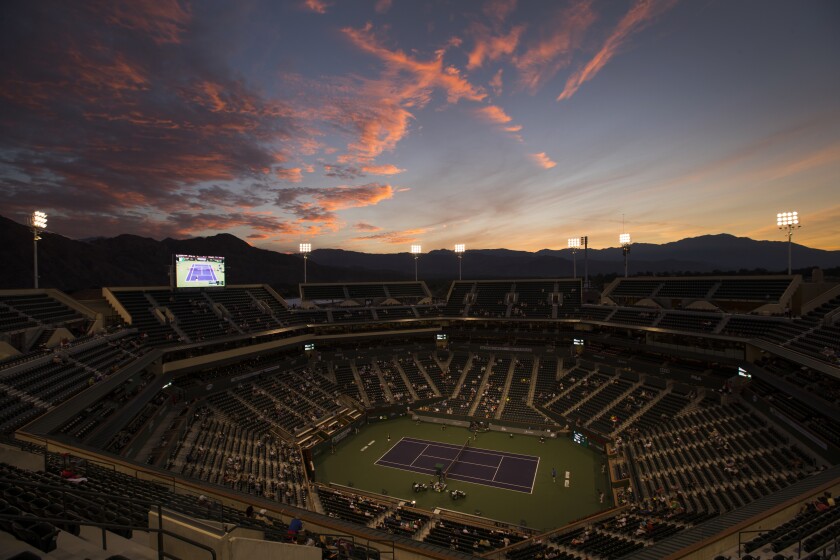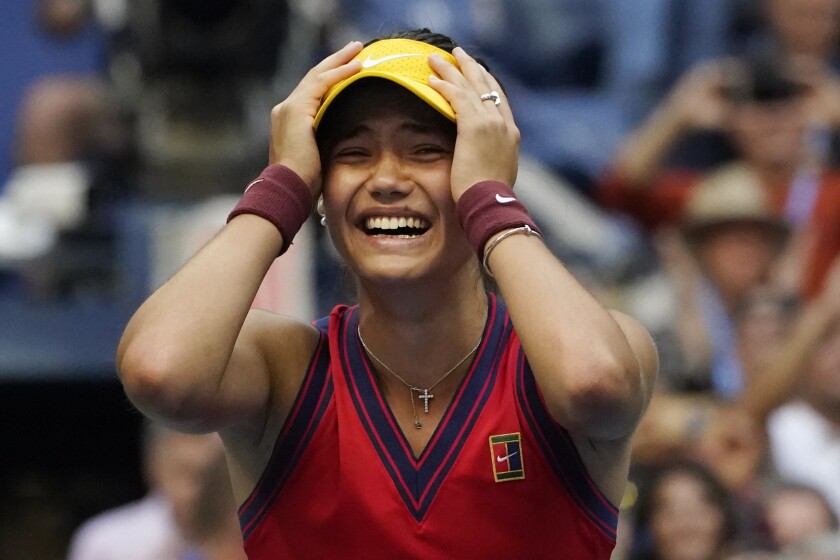BILL DWYRE
The BNP Paribas tennis tournament, like so many things in sports lost to the need for COVID-19-precautions, will have an event for the first time in 19 months, starting this week.
The prestigious event at the Indian Wells Tennis Garden canceled its March event in both 2020 and 2021 and successfully and controversially negotiated to move to October so it wouldn’t lose two full years. The October dates partially conflicted with the Shanghai Masters and smaller tournaments in Asia and Europe, but the governing bodies of tennis eventually decided to allow Indian Wells to go ahead Oct. 6-17. Shanghai eventually canceled its Masters 1,000-level event, citing pandemic concerns.
There is a coincidental element at play. In early 2000, when the Indian Wells tournament was struggling financially, Shanghai pushed to purchase it and move it and its dates to China. Tournament founders Charlie Pasarell and Raymond Moore found new investors in the eleventh hour, retained the event for the desert and turned it into one considered the fifth major in the sport.
Tournament qualifying will be held Monday and Tuesday, followed by the start of the women’s main draw Wednesday and men’s main draw Thursday.
This 2021 event, while still one of the biggest stops on the pro tours, will have a different feel on several fronts. The men’s star attractions for years — Roger Federer, Rafael Nadal and Novak Djokovic, each of whom has won 20 major tournaments — will be absent. Federer and Nadal are injured and Djokovic withdrew last week. The women’s star for years, Serena Williams, is also not entered.
But the recent announcement of two wild card entries may have spiced up the field.
Andy Murray, a three-time major champion and once considered a part of the Big Four with Federer, Nadal and Djokovic, has recovered from a long spell of injuries and took a wild card into the tournament. Same for crowd favorite Kim Clijsters, who won four Grand Slam events and won twice in the desert.

Men’s defending champion Dominic Thiem of Austria will not return. He is still recovering from a wrist injury. But women’s 2019 champion Bianca Andreescu of Canada will play. Andreescu came out of nowhere to win at Indian Wells in 2019, then six months later stunned Serena Williams to win the U.S. Open.
Even bigger attractions may be the success stories from this year’s U.S. Open. Daniil Medvedev of Russia spoiled Djokovic’s quest for a calendar-year Grand Slam, the first since Rod Laver’s in 1969, with a stirring five-set victory in the final in New York. And newcomers Leylah Fernandez and Anna Raducanu played an inspiring U.S. Open final and charmed the packed house in Arthur Ashe Stadium with both their tennis and their post-match warmth. Raducanu became the first qualifier to win the event and Fernandez was equally unheralded coming into the Open. Both are teenagers, Fernandez from Canada and Raducana from England.
As large and prestigious as this event has become, there will be many differences from past years.
Tournament officials say they are shooting for 60% capacity attendance, which would be about 300,000 people over the 12-day event. There will be no paper tickets. Spectators will receive tickets through an app and show them on their phones at the entrances. It will also be a cashless event. All entrants must be vaccinated. No spectators under age 12 will be allowed.
There will be a chair umpire and ball kids for each match, but no line-callers, as was the case at the U.S. Open. The electronic Hawkeye cameras, long ago installed on each court at Indian Wells, will be the final word on line calls.
As a nod to potential hot October weather in the desert, there will also be an emphasis on night matches. Official night matches will be held, as usual, on Center Court and Court 1, but on seven other courts with lights, day sessions will be scheduled with later matches not starting before 6 p.m., pushing many matches on those courts well into the evening and the cooler weather.
Those who purchased tickets for the 2020 event, which was canceled one week before it was to begin, have been given three options: a full refund, the ability to apply their purchase to this October event, or the ability to do the same for the March tournament, which will return the BNP Open to its normal spot on the tennis calendar.



